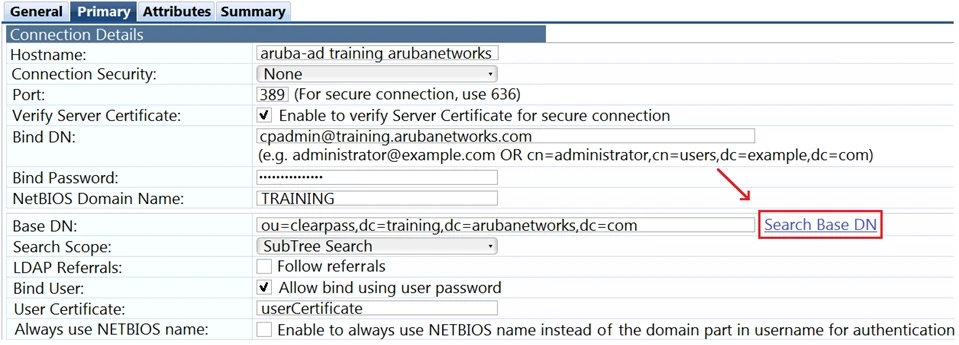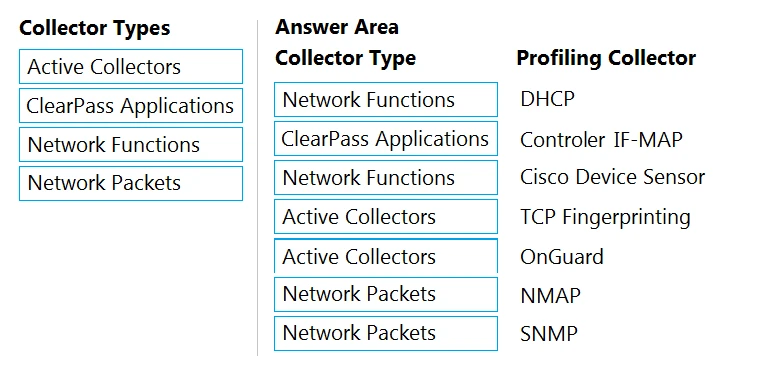ClearPass typically uses REST APIs over HTTPS to communicate with external context servers. REST APIs are a standard and widely supported way of integrating different systems, and HTTPS ensures that the data transmitted over the network is secure. FTP over SSH, SOAP and XML, and YAML are not commonly used protocols for this type of communication in context server integrations.
Which fingerprint or fingerprints are used?
ClearPass uses fingerprinting profile data from multiple sources including MAC OUI, NMAP, DHCP, and OnGuard. It applies all available fingerprints to create a comprehensive profile of the client device. This allows for more accurate profiling by considering data from all sources rather than relying on a single method.

What does Search Base Dn do when joining an Active Directory domain? (Choose two.)
The Search Base DN in the context of joining an Active Directory domain serves two main purposes. First, it searches for the Base DN (Distinguished Name) based on what was typed in the field, which ensures accurate targeting within the directory service. Second, it sets the starting point in the directory tree for the Base DN search, defining where the search query begins within the hierarchy. These functions help streamline and accurately define the query parameters within the Active Directory.
To distinguish between an iPhone and an iPad, HTTP and IF-MAP are the most appropriate fingerprint collectors. HTTP can use user-agent strings, which browsers and applications send that provide detailed information about the device type. IF-MAP (Interface for Metadata Access Points) can also help by sending metadata that helps in identifying device characteristics more precisely. Other methods like SNMP, MAC OUI, and TCP header capture are less effective for this specific purpose, as they either provide less detailed information or focus on different aspects of network communication or device identification.
Match the correct Profiling Collector with the Collector Type. Collector Types may be used more than once.
Select and Place:

